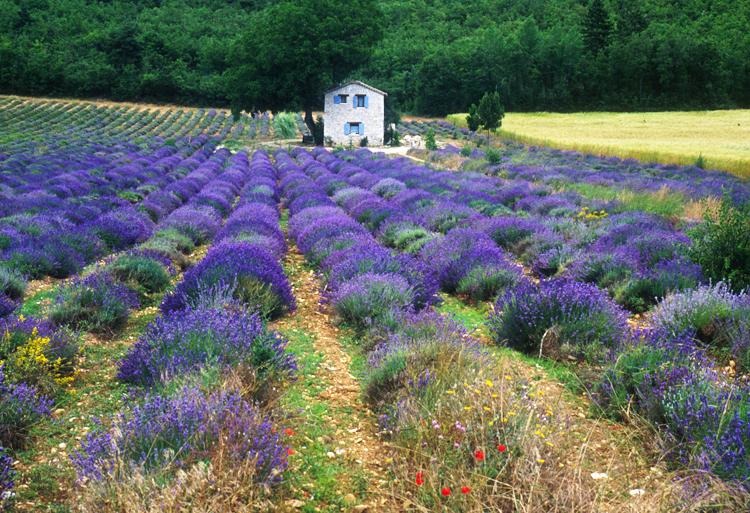An 1983 article about OSA when we first started
Sniffing out aromatherapy
By: Bill Mandel, S.F. Examiner
Wed., Nov. 2, 1983
San Rafael – There may not always be an England, but there’ll always be a Marin County. It was in the official chronicle of Marin County, the Pacific Sun, that I saw the ad: “NATURAL & LEGAL. A little rush in the morning or stress release in the evening! Hyssop oil and lavender with their allies will work beyond your expectations. Individual introduction to aromatherapy. The Original Swiss Aromatics. Kurt Schnaubelt, Ph.D.”
Any ad that says “natural and legal” piques my interest. That kind of vigorous protestation usually indicates the commodity being advertised is a close relative of things that are unnatural and illegal. Thus, “a little rush in the morning” reminded me of cocaine and “stress release in the evening” reminded me of Valium. There you have the twin pillars of modern Marin County society – and we were being offered natural, legal alternatives! How could I resist?
Kurt Schnaubelt, Ph.D., is a trim, handsome, Munich-born chemist of 32 who left his research and development job in Germany last spring to spread the pungent gospel of aromatherapy in the New World. A frequent visitor to the States, he knew exactly where he’d find the most fertile soil to plant the seed of this ancient therapeutic science: Marin County. San Rafael, to be exact.
Meeting me at the door of his modern condo-on-a-hill, Schnaubelt led me to an attractive wood-and-glass consulting room dominated by a large, bare-wood rack of small glass vials. These are the elements of his alchemy: 40 tiny jars of essential oils.
According to literature Schnaubelt gave me to read, aromatherapy is an ancient art-science going back at least 6,000 years to the Egyptians. Practitioners of healing, beauty and magic have known the beneficial properties of plant oils ever since, but the knowledge got lost in the furious rationalist shuffle of 20th century “science.” People who continued to use essences for health or beauty were considered kooks. Now, as we realize the failings and blind spots of technological medicine, “alternative” medical paths are being rediscovered. Aromatherapy is among them.
According to its devotees, aromatherapy can be used to combat disease, relieve various psychological conditions, cleanse and purify the skin and hair, and provide different emotional services (exhilaration, relaxation, etc.). Depending on the intent, on uses essential oils internally, in a bath or in a cream rubbed on the skin or hair.
Schnaubelt became interested in aromatherapy in 1978, when he came down with hepatitis. Reading the ingredients of the medicines prescribed for his condition, Schnaubelt became concerned.
“Most people can’t understand what’s in their medicine, because the words are so big,” Schnaubelt told me in perfect English with the slightest razor-edge of a Munich accent. “But, as a chemist, I know my molecules, and I realized the drugs I was taking were potentially harmful.”
One day, browsing in a bookstore, he found “The Art of Aromatherapy,” by Robert Tisserand, one of the two bibles in the field. The other is “The Practice of Aromatherapy,” by Jean Valnet. It’s no accident that both authors are French. The practice of aromatherapy is most popular in France – where medical insurance reimburses patients who consult practitioners – and in French Switzerland.
Over the course of several years, Schnaubelt familiarized himself with the properties of various oils and essences. As he explained, aromatherapy isn’t an exact science. It’s more like cooking, with its blending of various ingredients in correct amounts. Since everyone is different, the proper recipes will differ slightly from person to person.
The perfect essences are completely pure extracts drawn from shredded plant materials which are then subjected to a steam-distillation process. Schnaubelt is almost obsessed with the purity issue, using only very expensive oils produced by Kart, a Swiss pharmaceutical company.
A $40 consultation session consists of an introductory lecture on the seemingly endless applications of aromatherapy, a discussion of the physical or emotional ailments the client would like treated, and a test session with six basic essential oils: lavender, geranium, eucalyptus, rosemary, lemon and cypress. The client is the free to mix those and other oils to achieve the desired effect.
Naturally, I asked Schnaubelt about the natural and legal cocaine-like and Valium-like essences. He took out a vial of hyssop oil and let three drops hit my tongue. It tasted like pure turpentine, but within five minutes I experience a distinct high-energy clarity and focus.
We talked for another half-hour. Then he produced a vial of wild marjoram oil and poured three drops of that on my tongue. Again, there was an explosion of turpentine in my mouth. Soon, however, I felt a subtle but noticeable relaxation in my solar plexus.
Asked for an example of aromatherapy at work, Schnaubelt chose a suggested treatment for a urinary tract infection: thyme (for its antiseptic quality), juniper (a diuretic), lavender (anti-inflammatory agent) and eucalyptus (another antiseptic).
As I left, Schnaubelt put a drop of $20,000-a-pint rose essence on my fingertip. I don’t know what rose essence is supposed to do. Until I find out, I can’t afford to wash my hands.
